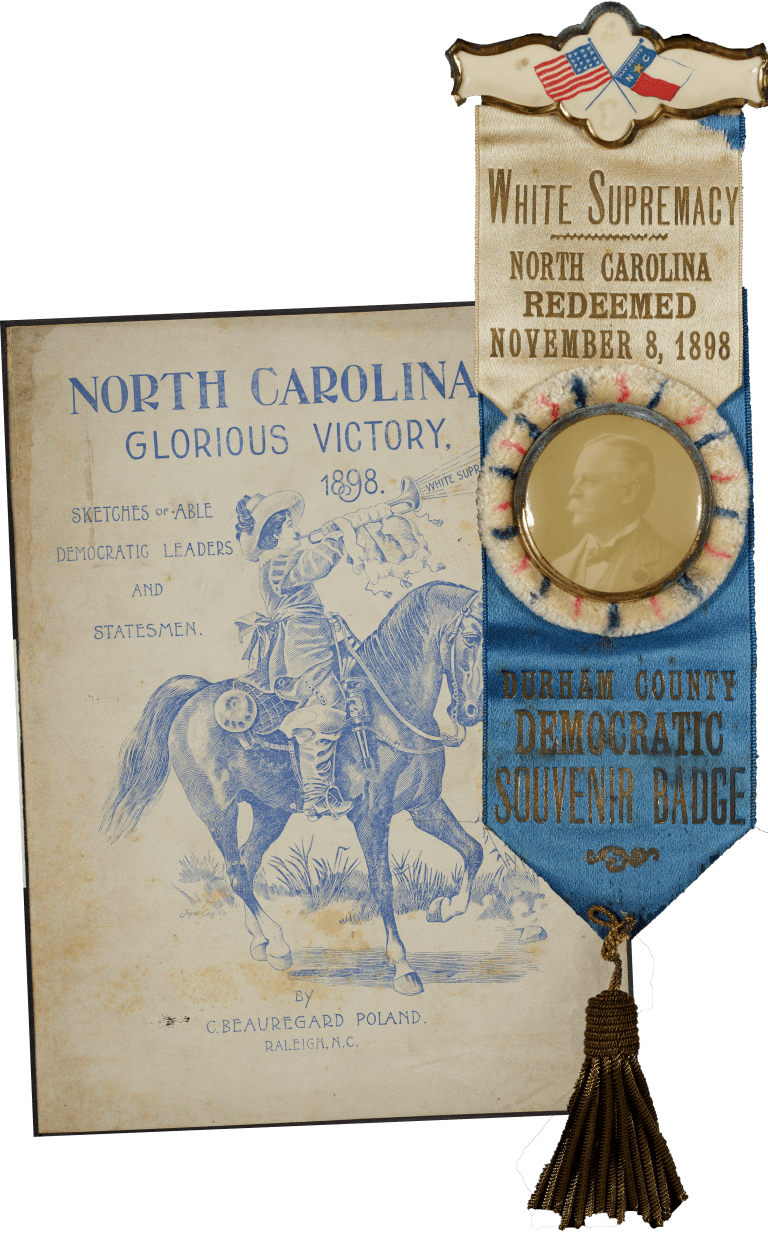Durham Food History
The Civil War effectively ended in April 1865, when Confederate Joseph E. Johnston surrendered to William T. Sherman at Bennett Place in Durham County. The Union’s defeat of the Confederacy resulted in massive societal change and opened up a brief time of tremendous potential for reform and change. During the period known as Reconstruction (1865-1877), the Federal Government maintained a military presence in the South and went about setting the conditions by which southern states could return to the Union. Among a host of political, social, and economic exigencies, was the question of what to do with the nearly four million formerly enslaved people who were freed with no land, jobs, money, or rights of citizenship.
In the first year of Reconstruction, an unprecedented event took place: formerly enslaved people were asked by the government what they wanted for themselves. A gathering took place in Savannah, Georgia in 1865 where the question was debated by Black leaders from across the south. Their spokesperson was Garrison Frazier, a Baptist minister from Granville County, located just north of Durham. Land was their number one demand: "The way we can best take care of ourselves, is to have land, and turn it and till it by our own labor … and we can soon maintain ourselves and have something to spare … We want to be placed on land until we are able to buy it and make it our own."
In the days that followed, the government, under Union General William T. Sherman's Special Field Order No. 15, ordered the redistribution of 400,000 acres of land along the South Carolina, Georgia, and Florida coast. However, Lincoln’s successor Andrew Johnson rescinded the order in late 1865, and the promise of reparations through land redistribution was never fulfilled. Economist and folklorist Sandy Darity and Kirsten Mullen contend that had this order been carried out, it “would have dramatically reversed black asset poverty and reduced black’s economic vulnerability across generations.”53-54
Throughout reconstruction and its aftermath, hunger was rampant across the South and the agricultural system was in chaos. Over the course of the war, critical infrastructure was ruined, farm buildings and machinery were destroyed, livestock ravaged, and agricultural fields laid fallow. The Freedman’s Bureau was the federal agency assigned to provide food, housing, medical aid, schools, etc. to freed people. However, the U.S. government was preoccupied with the political and economic questions of Reconstruction and categorically failed to take responsibility for the health and welfare of freed people. Among the reasonings employed was a concern not to have freed people become dependent on the government. Although it is difficult to quantify, historian Jim Downs estimates that during Reconstruction, more than a million Black people became sick from malnutrition, disease, and near starvation, and tens of thousands died.55-56
"I was never hungry til we was free and the Yankees fed us. We didn’t have nothing to eat except hard tack and middlin’ meat. I never seen such meat. It was thin and tough with a thick skin. You could boil it all day and all night and it wouldn’t cook, I wouldn’t eat it. I thought it was mule meat; mules that done been shot on the battle field then dried. I still believe it was mule meat… Dem was bad days. I was hungry most the time and had to keep fighting off them Yankee mens." – Martha Allen, formerly enslaved person from Craven County, who later lived in Raleigh (ref 57)
“…we lived all over the area because we were tenant farmers--very poor, living on the land of the owner, who was, of course, white. We used his mules, and he paid for the seed and the tobacco and the stuff that we planted. Of course, as I look back now, I know how they cheated us, because we never had anything.” – Theresa Cameron Lyons, on growing up in a Black tenant farming family in Durham County (ref 63)
After the failure to redistribute land in the immediate aftermath of the war, most people, Black or white, did not own land. In the area that is now Durham County, only 28% of white people owned land in 1875. As cash was scarce, the system of sharecropping arose to meet the need of white landowners of labor for land cultivation, and the needs of poor farmers of all races for physical and economic survival. With a sharecropping contract, poor farmers were granted access to farm small plots of land. Instead of paying rent in cash, they were required to give a portion of the crop yield, called shares, back to the landowner. Depending on the contract, sharecropping farmers received anywhere between one-fourth and three-fourths of the actual returns on their labor. An alternative (and preferable) arrangement was tenant farming. If a farmer could accumulate enough of his own equipment and money, he would pay a landowner rent for farmland and a house out of the money brought in from the harvest. The tenant farmer kept all of the proceeds from the crop.58-59
The North Carolina Landlord Tenant Acts of 1868 and 1877 codified a fundamental power imbalance between landowners and sharecropping farmers. The laws entitled property owners to set the worth of a crop at settling time and did not obligate landlords to put contracts in writing or require tenants to have access to ledgers or records. Beyond that, poor farmers without money to buy the fertilizer, tools, animals, and machinery necessary to farm had to borrow from landowners or merchants on credit, often at exorbitant interest rates. The result of this power imbalance, combined with the unpredictability of nature, was that most sharecropping and tenant farmers were barely able to make ends meet, and many became indebted to their landlords. There were also ecological consequences to the crop lien system. Trying to get ahead, these farmers would plant commodity crops intensively year after year, depleting nutrients from the soil. An 1887 report of the state's Bureau of Labor Statistics stated that the crop lien system had proven "a worse curse to North Carolina than droughts, floods, cyclones, storms, rust, caterpillars, and every other evil that attends the farmer."60-62
For newly freed people, many of whom worked the same land, lived in the same housing, and worked under close supervision of the same overseers, sharecropping was like “slavery under another name.” A sharecropping contract on Cameron lands, reveals the inherent injustice of the sharecropping arrangement. Sharecroppers’ behavior was monitored by white superintendents who were paid from crop yields before settling (cutting into sharecropper’s earnings). Undefined ‘gross misconduct’ could result in tenants being made to leave and completely forfeit their share of crops. Further, sharecropping farmers were prohibited from selling crops on their own, without notifying the landowner and having a superintendent present. No large gatherings of Black people other than for Sunday worship were allowed on the land.64
Reconstruction officially ended with the withdrawal of federal troops from the South in 1877, having failed to fundamentally alter economic and power relationships between Black and white people. Even before this date, North Carolina’s white power brokers had started to roll away civil rights for Black people by passing what are now known as the Black Codes. The Black Codes were a series of laws enacted in 1866 that denied Black people the right to vote, serve on juries, or testify against white people in court. The Codes outlawed interracial marriage and established capital punishment for Black people convicted of raping white women. They also prohibited Black people from owning or carrying firearms or other weapons unless they obtained a license one year before the purchase. Two years later, the traditional white elite, rankled by the progressive reforms of the Republican legislature and the new state constitution created in 1868, moved to regain power. They used a campaign of terror carried out by secret organizations such as the Ku Klux Klan and stoked white fear to win control of the state legislature in 1870 and the governorship in 1876.66-67
During this time of political and economic flux, the agricultural economy of the Piedmont region, which includes the land that is now Durham, began to undergo a significant change. This change was marked by a shift from being a mixed subsistence and market agriculture economy to one dominated by cash crops- especially tobacco. The rise of the cash crop economy was enabled by the arrival of the North Carolina Railroad in 1854, which expanded the region’s agricultural markets. The politically well-connected Cameron family had lobbied the state for a local railroad stop to expand the market reach for their plantation's products. This stop became the Durham Station and the center of the future city.68-70
From the 1860s onward, sharecroppers and tenant farmers in Durham primarily grew cash crops of tobacco, cotton, or wheat, while scratching out a subsistence living for their families. Families tended to be large, as many hands were required to work the land. On the farm, women carried out the exhausting work that transformed raw provisions into food and clothing for the whole family. In addition to all the household chores, they also gardened and tended the domestic animals. However, despite having many bellies to feed, hunger on farms was uncommon, even if the provisions were simple. As Ila Blue recounts of growing up in a sharecropping family in Durham County: “We ate, but we didn't have any money, that was our problem.”71-72
Despite nearly a third of people in Durham County working as sharecroppers in the late 1800s, Black people started to acquire land. Land prices were remarkably cheap during this time. Moreover, Piedmont land became available as some white landowning farmers left to settle more productive land in the South and West- a new ownership opportunity from which Black people were largely excluded.This opportunity was created by the Homestead Act of 1862, which granted 160 acres of stolen Native People’s land in the West to any American who applied and worked the land for 5 years. Over the course of the next 60 years, 246 million acres of western land were given to individuals for free. About 1.5 million families were given this crucial economic foundation, but only about 5,000 of those were Black.13
For Black families, farmland ownership represented more than just a material asset or a source of income. It was also a means of self-determination, self-sufficiency, and a foundation for economic and political power. With these strong motivations, Black farmers and laborers worked both inside and outside of the system to acquire land. They leveraged relationships with white landowners, squatted on unused land, and saved hard earned “Sunday money” (extra wage labor done on the weekends) for a piece of land to call their own. In Durham and across the South, Black land ownership grew dramatically, peaking between 1910-1920. Although Black farms were generally smaller and on less productive land than their white counterparts, land became many family’s primary asset and intricately entwined with heritage and home.14
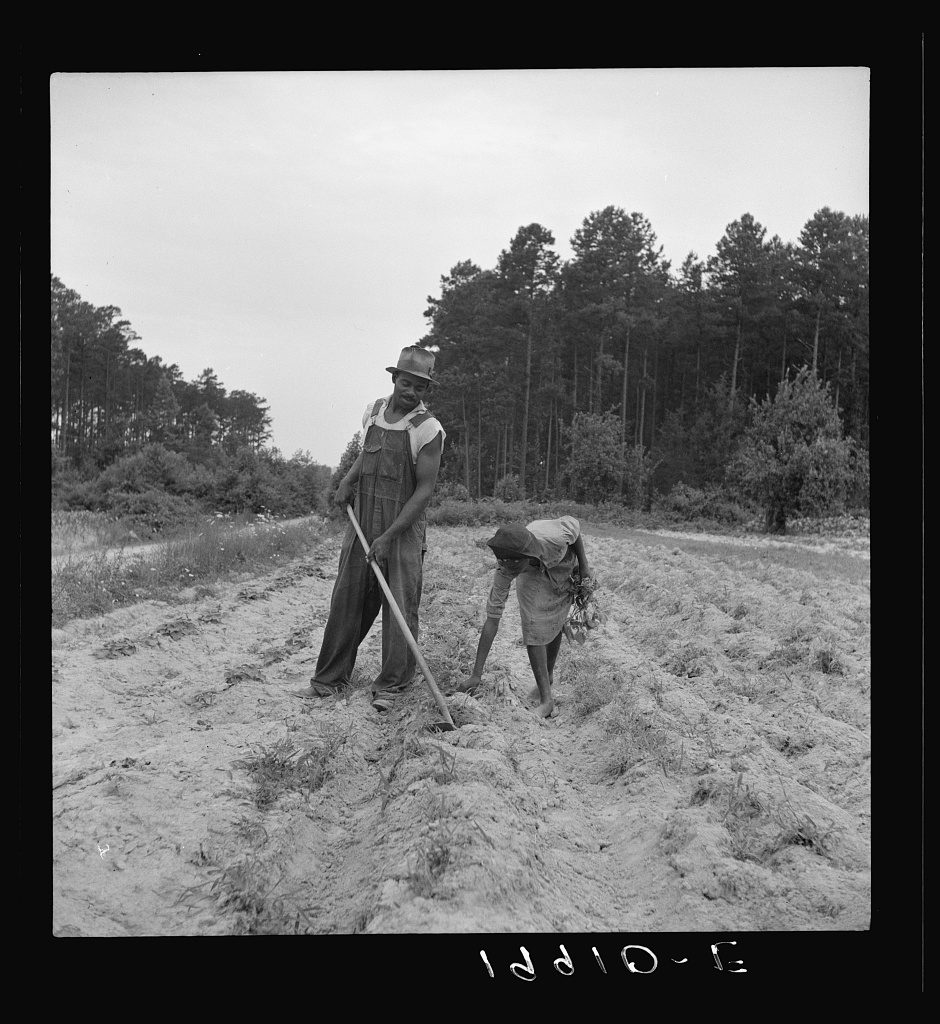
“The Negroes to have as their compensation a share of the crops that shall be raised one third part of the wheat, corn, cotton, tobacco, syrup, peas, sweet potatoes, & pork. But the seed wheat is to be first pas'd back to the said Cameron. The hogs to be killed or pork shall be fattened out of the corn crop before division. The said Cameron is to have the other two thirds of said crops.” - Cameron sharecropping contract, 1866 (ref 65)
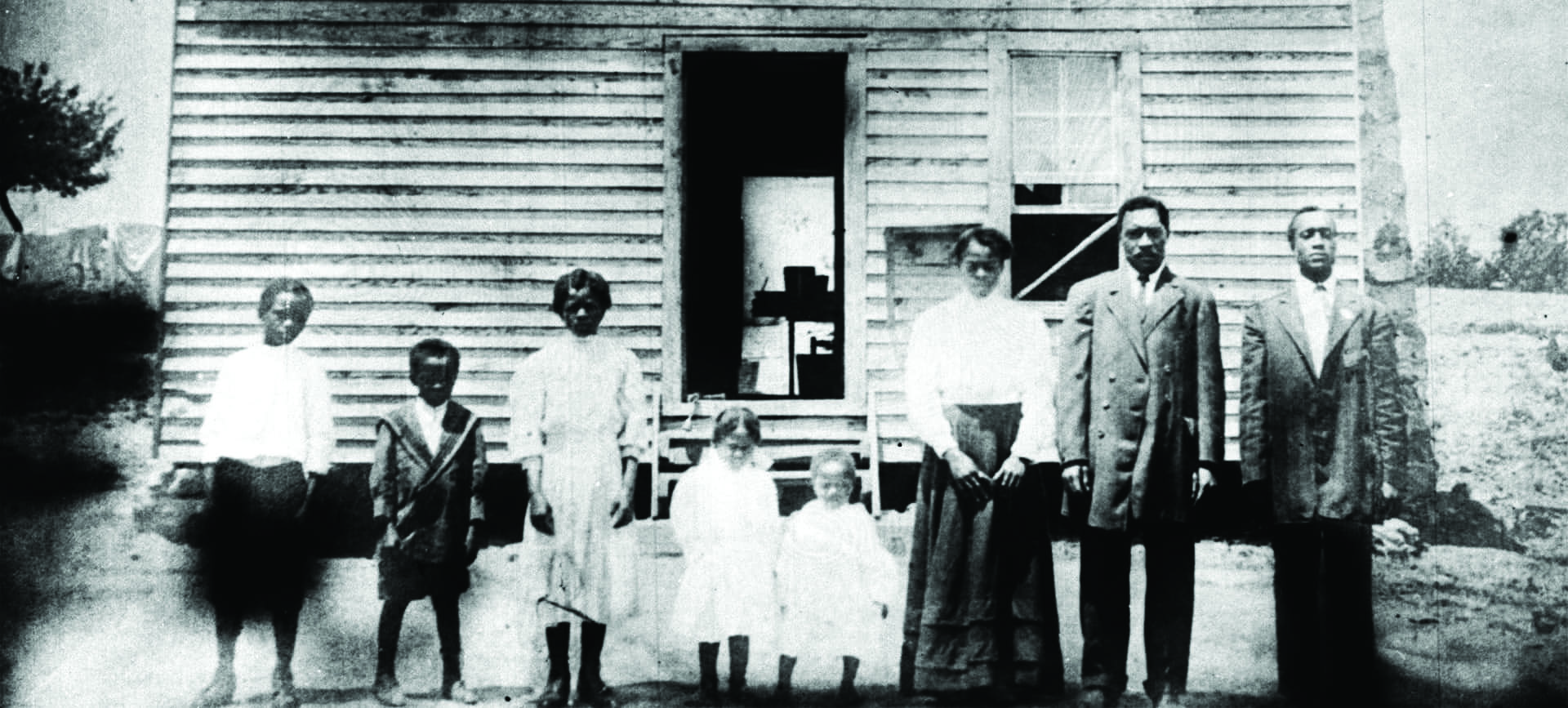
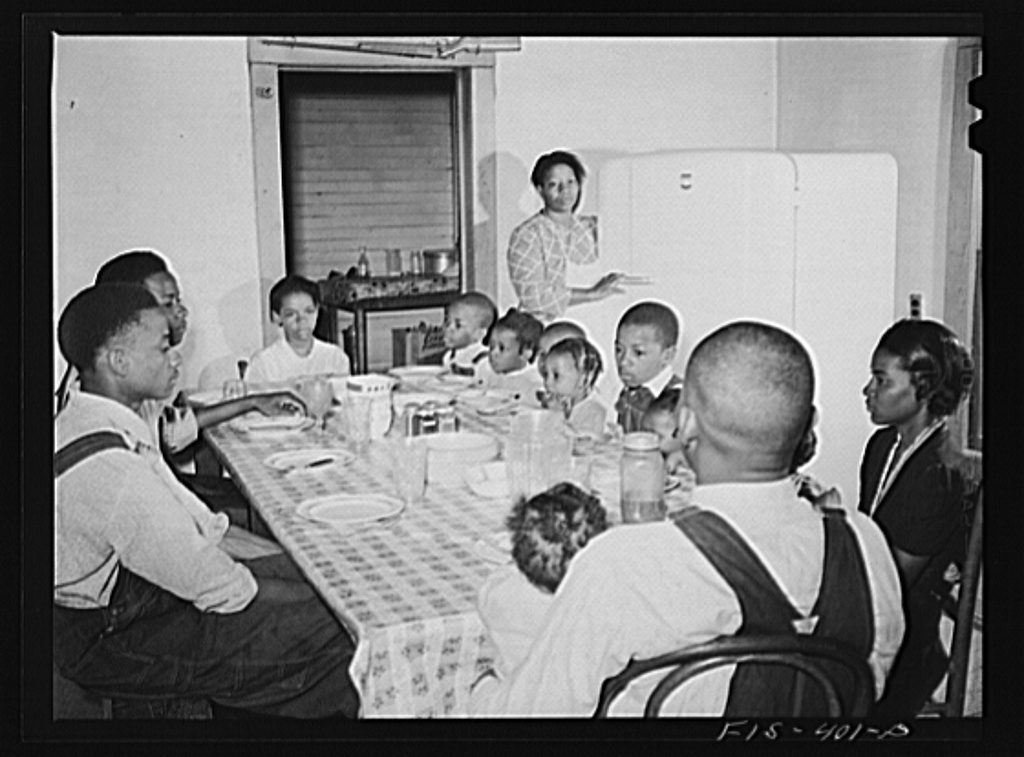
“My granddaddy had fifty-two acres of land. They said he was working for this white family and the man took a liking to him, and back then land was cheap. And that man told him, Robert, what you ought to do is buy you an acre of land every month. He give him $12 a month, so he bought an acre of land a month, a dollar a month, for a year. And he bought that farm with 52 acres of land in it, and he built his house out of logs. I remember that log house just as good, I can. – Arthur Brodie, Black man born in Franklin County, who made his home in Durham (ref 77)
“My daddy went to New York and worked for $1.00 a day, and they raised him to a $1.25 a day—not an hour, but a day! And saved money—I think he said he gettin' about $1.50 then in the later years—he stayed up there three or four years. The people didn't come back like they do now. And stayed up there all that time, and when he came back, he bought a farm and married my mother.” – Dora Scott Miller, Black tobacco worker in Durham, born in Apex, North Carolina (ref 78)
My daddy was just a very smart man. He was the second child in the family and he was just always very ambitious and always worked very hard, and went as far in school as schooling was offered in his time. He was a very progressive sort of man. And got married. He was about 21 when he got married. And lived as a tenant farmer for a few years. But farmed with the idea of buying his own land. So pretty soon in his marriage he bought a very little farm, we still own that little farm. And worked it as an independent farmer until he saved up enough money to buy the land that I refer to as the land that I grew up on. – Mildred Oakley Page, on growing up in a Black farm family just north of Durham County in Berea, North Carolina (ref 79)
In the last decades of the 19th century a white Farmers’ Alliance chapter formed in Durham to encourage farmers to aid and support one another, and weld themselves into an effective political group. Among their local accomplishments were a cooperative food store, a cooperative tobacco warehouse, and a tobacco manufacturing company. Cooperative buying resulted in cheaper prices for food and supplies that could not be produced on the farm. Despite the popularized image of farmers as rugged individualists, the value of cooperation was deeply steeped in farming culture. Throughout the year, farmers would come together to help each other in communal endeavors like corn shuckings, wheat thrashings, pig killings, and barn raisings. It was not uncommon for these gatherings to occur across race, although evidence indicates that meals were taken separately. There was also a Colored Farmers’ Alliance in North Carolina, but it is unknown to what extent the organization was active in Durham. However, a more radical farmer’s organization called the “Knights of Labor” did attract a local contingent of Black farmers.18
But cooperation could only take them so far. Farmers of all races, who comprised 75% of the North Carolina population in 1887, had a mounting set of political and economic grievances. The low cost of farm products meant that that many farmers could barely break even after harvest. Chronic debt to merchants and larger landowners was common. Railroad shipping prices were high and interest rates were unregulated. Across the state, many white farmers broke with the Democratic Party and joined the Populist Party, a progressive third party deeply rooted in the Farmers Alliance and agrarian interests. Leading up to the election of 1894, Populists allied with the Republican Party, to which nearly all Black people belonged, in order to wield enough political power to win the election. This cooperation became known as Fusion Politics. In Durham there was both a local Republican Party and a contingent of Populist refugees from the Democratic Party and the Farmers’ Alliance. Black people participated in the Fusion collaboration because it provided them with their best chance for a role in North Carolina politics that decade.84-85
The eight years of Fusionist rule in North Carolina between 1894 and 1900 are a powerful anecdote of what was possible when Black and white people unite in their shared economic and political interests, even in the absence of warm personal relationships. Reformers elected on the Fusion ticket made significant social and political progress during this time. They greatly expanded voter participation by ensuring that election judges represented all political parties at the polls. They also required designated colors and party insignias on ballots so that the illiterate had a political voice. Economic reforms included limiting interest rates, a major win for farmers of both races. Reformers also made significant investments in public education, which benefited all poor people across the state. By opening up the political process, Black people were elected to local, state, and national offices. This was especially so in the eastern part of the state where there had always been a higher proportion of Black residents.86
These political reforms were met with a fierce white supremacist backlash leading up to the state elections of 1898. Escalating racial rhetoric and violence across the state culminated in a massacre in Wilmington, North Carolina in November 1898. The massacre was the vehicle for a political and economic coup, whereby a mob of white vigilantes destroyed Black businesses and disposed Fusion-elected officials, both Black and white. Historical accounts are unclear about the exact number murdered, but estimates range from 60 up to 300. Many of the city’s Black residents fled for their lives or were run out of town. The same week as the horrific events in Wilmington, a Durham County mob lynched a Black man, Manly McCauley, accused of eloping with a white woman. These events and countless other acts of violence across the state resulted in severe Black voter intimidation and a massive electoral victory for the white supremacy campaign.87-88
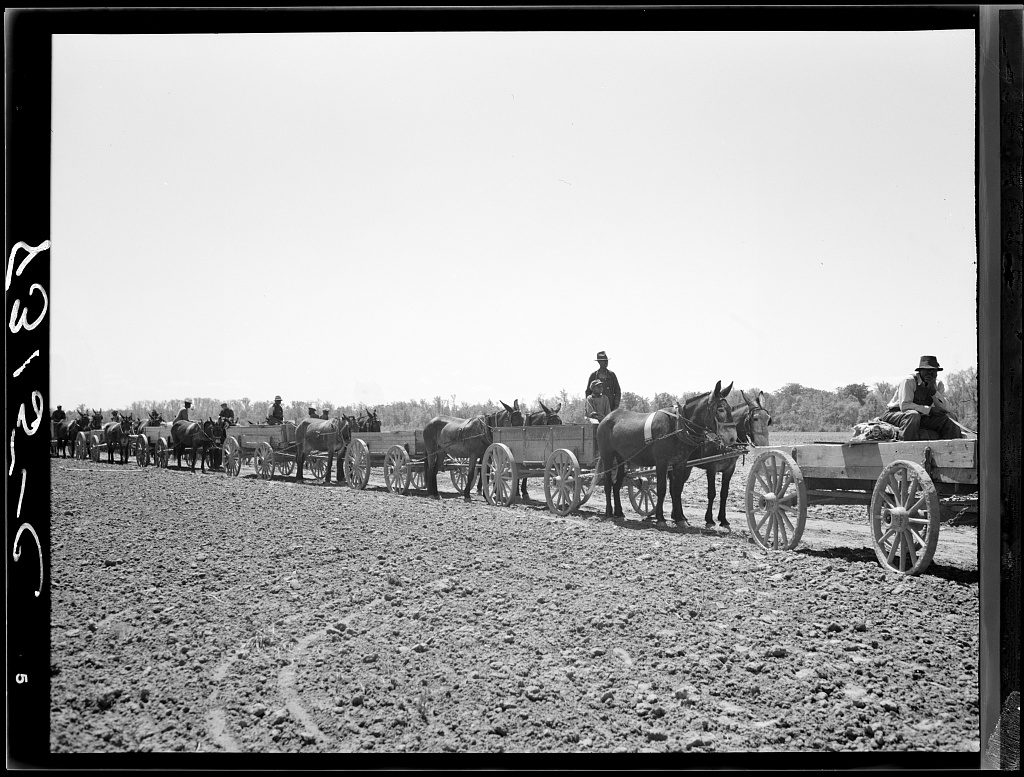
Table 1. Like most places across the South, Black land ownership in Durham rose in the last quarter of the 19th century, peaking in approximately 1920.
|
Percentage of Farmers Owning Their Farms and Average Farm Size for Durham County, 1880-1930 |
|||||
|---|---|---|---|---|---|
| 1880* | 1900 | 1910 | 1920 | 1930 | |
| Average Farm Size (acres) | 115 | 96 | 85 | 76 | 71 |
| Black Farm Ownership | N/A | 9% | 21% | 26% | 20% |
| White Farm Ownership | N/A | 50% | 54% | 53% | 53% |
Source: Chart recreated from Janiewski, Dolores, Sisterhood Denied, 25
Source: U.S. Bureau of the Census, 10th, 12th, 13th, 14th, 15th Census for Agriculture.
Note: *1880 figures are for Orange County, from which Durham County was formed in 1881
“One other memory of childhood that I do remember, farmers would have corn shuckings and wheat thrashings. And the corn shuckings were mostly black folks... And those were good days because there was always a good dinner. Somebody had the job of fixing the dinner so the men would shuck the corn. And of course, they would shuck all the corn. The corn would be shucked and put into the cribs, and then everybody would go home. And this sort of thing went around from family to family. So you paid back for that sort of thing. And with the wheat thrashing, that was all blacks and whites because the thresh mill I guess it was called, would come through the community, and stop at each farm, and the men would follow it from one farm to the next to help with the thresher, would cut the wheat, and they'd bind it up and tie it up, so it took a lot of people to do it. So whatever year the thresher got to your house at dinnertime, you had to feed the men. (laughter) So occasionally through the years, the thresher was at our house for dinner. So that was an integrated activity. And it's funny how with some things, well, the white neighbors were very good people, very good people, very good Christian people. And thought nothing of it, just considered this their duty to include our farm in with them, because most of the black people were not home owners. They just considered it their duty to be a part of that thrashing. And when it was at their house, black folks would eat at their house. I don't know whether or not they ate at the dining table or not (laughter) because I wasn't out with them. But it was a good community spirit.” - Mildred Oakley Page, on growing up in a Black farm family just north of Durham County in Berea, North Carolina (ref 83)

By 1900, Democrats (then the party of white supremacy in the South) were in full control the North Carolina Senate, House, and governorship. Intending to keep it that way, Charles Aycock, the newly elected governor, immediately went about ensuring Black voter disenfranchisement by putting forth an amendment to the North Carolina state constitution that drastically restricted Black voter eligibility. The amendment had three main parts. The first was a literacy requirement that voters must be able to read and write a section of the state constitution in the English language in order to be eligible to vote. The second was the introduction of a fee known as a ‘poll tax’ that people were required to pay before casting a ballot. The third was a legal loophole known as the ‘grandfather clause,’ that was included in order not to disenfranchise illiterate white people. The grandfather clause created an exception to the literacy requirement if a person or their direct ancestor could vote on January 1, 1867, a date that preceded federal laws against racial discrimination. To drum up local support for the public referendum on the amendment changes, a white supremacy parade took place Durham, with a procession including a “white supremacy banner, followed by a band and a white float with sixteen young ladies all attired in white carrying small white flags. Streamers on each side of the float proclaimed, “Protect us with your vote.” The state referendum passed overwhelmingly.89-91
The result of these disenfranchisement policies, combined with ongoing violence, intimidation, and whites-only Democratic primaries, was systemic Black political exclusion across the state. As striking evidence, the number of Black registered voters in North Carolina plummeted from 126,000 in 1896 to 6,100 in 1902. Around the same time, in 1896, the Supreme Court heard the landmark Plessy v. Ferguson case, and decided that “separate but equal” was legally permissible. These events ushered in a new era of racial apartheid known as Jim Crow.92
References
- Gates, Henry Louis, Jr. (2013). The Truth Behind ’40 Acres and a Mule.’ The Root. Retrieved from https://www.theroot.com/the-truth-behind-40-acres-and-a-mule-1790894780
- Darity, William and Mullen, Kristen. (2020) From Here to Equality: reparations for Black Americans in the twenty-first century. Chapel Hill: University of North Carolina Press, p. 175
- Darity, William and Mullen, Kristen. (2020) From Here to Equality: reparations for Black Americans in the twenty-first century. Chapel Hill: University of North Carolina Press, p. 172
- Downs, Pete. (2012). Sick From Freedom: African-American illness and suffering during the Civil War and Reconstruction. New York: Oxford Press, p. 3-17, 180
- Library of Congress. Born in Slavery: Slave Narratives from the Federal Writers’ Project, Martha Allen, 1936. Retrieved from https://www.loc.gov/collections/slave-narratives-from-the-federal-writer...
- Orange County, North Carolina Tax Rolls, 1875
- Janiewski, Dolores. (1985). Sisterhood Denied: race, gender, and class in a new south community. Philadelphia: Temple University Press, 1985, p. 13
- Janiewski, Dolores, (1985). Sisterhood Denied: race, gender, and class in a new south community. Philadelphia: Temple University Press, p. 11, 16-17
- Brown, Leslie. (2008). UpBuilding Black Durham: Gender, Class, and Black Community Development in the Jim Crow South. Chapel Hill: University of North Carolina Press, p. 30
- Crop Lien System. NCPEDIA. Retrieved from https://www.ncpedia.org/crop-lien-system
- John Hope Franklin Research Center, Duke University Libraries. (1995). Interview with Theresa Jan Lyons (btvnc03021), interviewed by Leslie Brown, Durham (N.C.). Behind the Veil: Documenting African-American Life in the Jim Crow South Digital Collection
- Wilson Library, University of North Carolina at Chapel Hill. (1866). Sharecropping contract dated Dec 5, 1866, Cameron Family Papers #133. Southern Historical Collection.
- Wilson Library, University of North Carolina at Chapel Hill. (1866). Sharecropping contract dated Dec 5, 1866, Cameron Family Papers #133. Southern Historical Collection.
- Black Codes 1866. NCPEDIA. Retrieved from https://www.ncpedia.org/anchor/black-codes-1866
- Janiewski, Dolores. (1985). Sisterhood Denied: race, gender, and class in a new south community. Philadelphia: Temple University Press, p. 39
- Janiewski, Dolores. (1985). Sisterhood Denied: race, gender, and class in a new south community. Philadelphia: Temple University Press, p 10-1
- Jean Anderson. (1978). Fairintosh Plantation and the Camerons. NC Division of Archives and History
- Stokes, Durward. (1981). Company Shops: The Town Built by a Railroad. Winston-Salem: J.F Blair, p. 2-7
- Janiewski, Dolores. (1985). Sisterhood Denied: race, gender, and class in a new south community. Philadelphia: Temple University Press, p 28-33
- John Hope Franklin Research Center, Duke University Libraries. (1995). Interview with Ila Jacuth Blue (btvnc02072), interviewed by Blair Murphy and Kisha Turner, Durham (N.C.). Behind the Veil: Documenting African-American Life in the Jim Crow South Digital Collection.
- The Louis Round Wilson Special Collections Library. University of North Carolina at Chapel Hill. (1936-1940). Interview with Amon Mitchell, interviewed by W.O. Forsters. Federal Writers’ Project Papers: 1936-1940. Collection #0379, Folder 387.
- Hochstadt, Steve. (2019). How African American Land was Stolen in the Twentieth Century. History News Network. Retrieved from https://historynewsnetwork.org/blog/154232
- Janiewski, Dolores. (1985). Sisterhood Denied: race, gender, and class in a new south community. Philadelphia: Temple University Press, p 42.
- Bilecky, Emma Leitz. (2019). Assessing the Impacts of USDA Civil Rights Settlements: Pigford in advocacy and context. Master’s Thesis, Duke University Sanford School of Public Policy
- John Hope Franklin Research Center, Duke University Libraries. (1993). Interview with Arthur Leonard Brodie (btvnc03002), interviewed by Chris Stewart, Durham (N.C.). Behind the Veil: Documenting African-American Life in the Jim Crow South Digital Collection
- Southern Oral History Program. (1979). Interview with Dora Scott Miller, June 6, 1979. Interview H-0211. Southern Oral History Program Collection (#4007)
- John Hope Franklin Research Center, Duke University Libraries. (1995). Interview with Mildred Oakley Page (btvnc03029), interviewed by Doris Dixon and Felicia Woods, Durham (N.C.). Behind the Veil: Documenting African-American Life in the Jim Crow South Digital Collection.
- McEuen, Melissa. (2004). Seeing America: Women Photographers between the War. Lexington: University Press of Kentucky, p.168-170
- Janiewski, Dolores. (1985). Sisterhood Denied: race, gender, and class in a new south community. Philadelphia: Temple University Press, p. 18
- Brown, Leslie. (2008). UpBuilding Black Durham: Gender, Class, and Black Community Development in the Jim Crow South. Chapel Hill: University of North Carolina Press, p. 43
- John Hope Franklin Research Center, Duke University Libraries. (1995). Interview with Mildred Oakley Page (btvnc03029), interviewed by Doris Dixon and Felicia Woods, Durham (N.C.). Behind the Veil: Documenting African-American Life in the Jim Crow South Digital Collection
- Edmonds, Helen. (1951). The Negro and Fusion Politics in North Carolina: 1894-1901. Chapel Hill: University of North Carolina Press, p. 20-25
- Brown, Leslie. (2008). UpBuilding Black Durham: Gender, Class, and Black Community Development in the Jim Crow South. Chapel Hill: University of North Carolina Press, p. 53-54
- Edmonds, Helen. (1951). The Negro and Fusion Politics in North Carolina: 1894-1901. Chapel Hill: University of North Carolina Press, p. 41, 62, 70-74
- Zucchino, David. (2020). Wilmington’s Lie: The Murderous Coup of 1898 and the Rise of White Supremacy. New York: Grove Atlantic, 2020
- Brown, Leslie. (2008). UpBuilding Black Durham: Gender, Class, and Black Community Development in the Jim Crow South. Chapel Hill: University of North Carolina Press, p. 60-61
- Poll Tax. NCPEDIA. Retrieved from https://www.ncpedia.org/poll-tax
- Grandfather Clause. NCPEDIA. Retrieved from https://www.ncpedia.org/grandfather-clause
- Anderson, Jean. (2011). Durham County. Durham: Duke University Press, p. 186-187
- Christensen, Rob. (2008). The Paradox of Tar Heel Politics: the personalities, elections, and events that shaped modern North Carolina. Chapel Hill: University of North Carolina Press, p. 39
